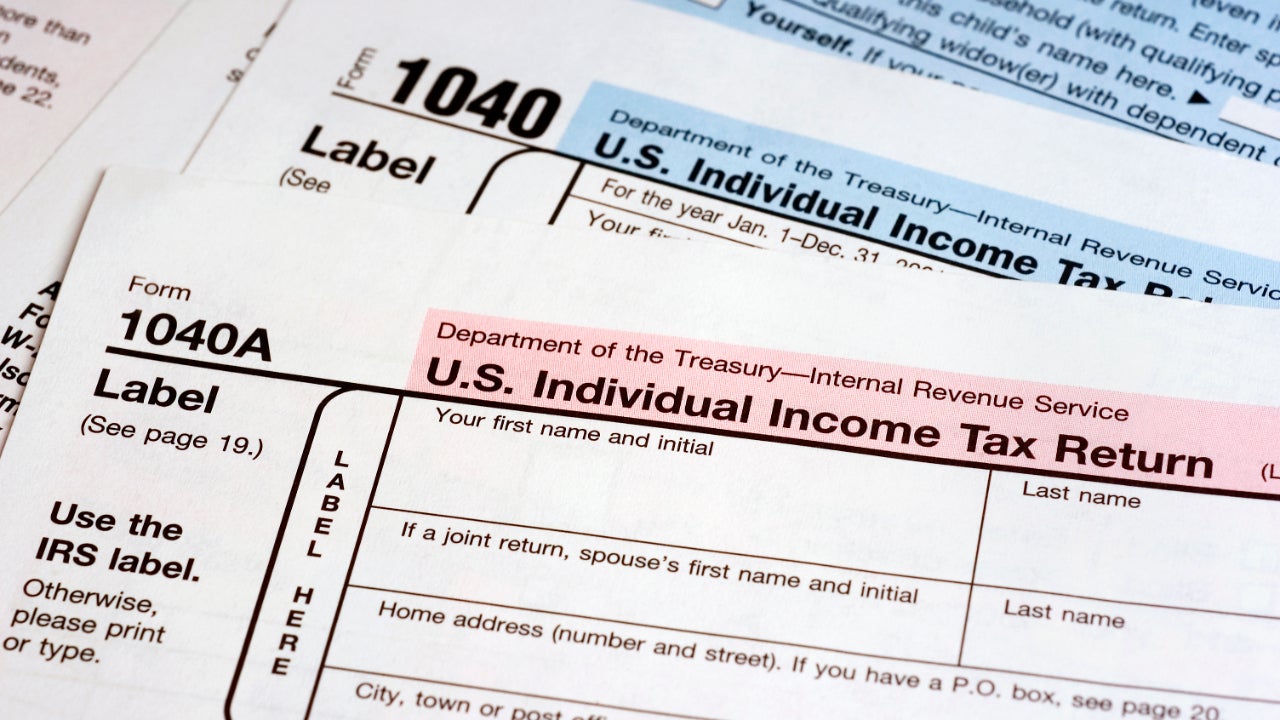Which tax form should you use: 1040, 1040EZ or 1040A?

Peter Cade/Getty Images
Filling out a tax form is about as much fun as owing taxes to Uncle Sam. The complexity of the task intensifies as your tax life becomes more complicated.
That’s why you should use the simplest tax return form you can, especially if you’re still filling out your forms by hand.
But choose carefully. There are three personal income tax forms — 1040, 1040A and 1040EZ — with each designed to get the appropriate amount of your money to the IRS. Differences in the forms, however, could cost you if you’re not paying attention.
The EZ is the shortest and simplest form, Form 1040A is a bit more complex and the long Form 1040 is the most detailed and potentially difficult. But even if your tax life is simple and straightforward, it might be worthwhile to investigate the other two forms. Why? Generally, the longer the form, the more opportunities for tax breaks.
RATE SEARCH: Shopping for a mortgage? Compare mortgage rates today at Bankrate.com.
Health care and EZ limits
If you previously filed Form 1040EZ, but bought health insurance through an Affordable Care Act state or federal exchange, known as the marketplace, you can no longer file this simplest form.
When individuals purchase a policy through an exchange, they have an option to receive advance payment of the premium tax credit. This tax credit helps cover some of the insurance costs. The advance credit amount, however, must be accounted for when the policy recipient files his or her tax return.
If the advance premium amount was too small, the taxpayer will get the extra. However, if too large of an advance premium credit was paid, the taxpayer must make up the difference, either by paying any tax due or by having the amount taken from an expected refund.
Such calculations are made on Form 8962, which only can be filed with Form 1040A or 1040. If you received advance payments of the premium tax credit, you must file one of these longer forms instead of the 1040EZ.
Even if you did not get the premium credit in advance but got health care through an exchange and want to claim it when you file, you must complete 1040A or 1040.
How the EZ could cost you
Even if you can file 1040EZ, it might not be the best move.
Take the case of 2016 tax filer Joe P. Taxpayer. Joe finished college last year and got his first full-time job making $40,000. He’s single, renting and has no investment income. A perfect 1040EZ filer, right? Sure, if you’re Uncle Sam, because Joe will overpay his taxes by using the short form.
Why? The Form 1040EZ doesn’t offer Joe some valuable tax breaks found on the other two returns.
Joe has a student loan. By filing Form 1040A, he can subtract from his income the $2,500 interest he paid on that debt. He can’t do that with the shortest form. Joe also started planning for his retirement by putting the maximum $5,500 into a traditional individual retirement account. Because his new employer doesn’t offer a company retirement plan, Joe’s deductible IRA contribution can reduce his taxable income further, but only if he files the longer form.
By choosing the 1040A over the 1040EZ, suddenly Joe owes taxes on just $32,000 instead of on his full $40,000 salary. And he’s dropped into a lower tax bracket — the 15 percent one instead of the 25 percent tier — even before he reduces his taxable income further by taking the personal exemption that every taxpayer is allowed and his standard deduction amount.
Joe also would get the chance to reduce his actual bill if he files the longer 1040A. If Joe took a course to improve his job skills and was not reimbursed by his employer for the cost, he could claim the Lifetime Learning tax credit; it’s also available on the long Form 1040. The better tax news for Joe is that a credit allows you a dollar-for-dollar reduction of what you owe the IRS. But the only tax credit shown on the 1040EZ is the earned income tax credit, available only to low-income taxpayers.
So, opting to file Form 1040A instead of 1040EZ saves Joe a bundle. And there are even more tax-saving opportunities found on the long Form 1040. They might not apply to Joe, but they could cut your tax bill — if you take the time to look over each of the forms. Here are the basic guidelines for the three individual tax returns.
Form 1040EZ
The simplest IRS form is the Form 1040EZ. And ever since the IRS doubled the earning limit on filers who use it, the EZ has been available to even more taxpayers.
You can file the 1040EZ return if:
- Your filing status is single or married filing jointly.
- You’re younger than 65. Your spouse also must meet the age requirements if you file a joint return. If you or your spouse’s 65th birthday is Jan. 1, then for filing purposes you are considered to have turned 65 last year and therefore cannot file this form.
- You (or your spouse if filing jointly) were not legally blind during the last tax year.
- You have no dependents.
- Your interest income is less than $1,500.
- Your income, or combined incomes for joint filers, is less than $100,000.
The ease of the one-page 1040EZ is appealing, but it limits the number of ways to save on your tax bill.
As already mentioned, this shortest personal return restricts filers to claiming just one credit: the earned income tax credit, or EITC, a tax break designed to help out individuals who don’t make much money.
You also need to look at those other two individual tax returns to take advantage of additional income adjustments and tax credits.
RATE SEARCH: Looking for a high-yielding savings account? Compare rates at Bankrate.com today!
Form 1040A
The 1040A form is the next step up the tax-form ladder. As with Form 1040EZ, the earning limit on filers wanting to use the 1040A has increased, so more taxpayers should be able to use it.
Individuals choosing the 1040A can file using any of the five available filing status options: single, married filing jointly or separately, qualifying widow or widower, or head of household. People who file the 1040A also can claim, in addition to the EITC, several tax credits — the child, additional child, education, dependent care, elderly or disabled, and retirement savings credits — that are not available with the EZ.
You also can file Form 1040A if:
- Your taxable income, or combined incomes, is below $100,000.
- You have capital gain distributions, but no other capital gains or losses.
- You do not itemize deductions.
Form 1040A also gives you the chance to claim several adjustments to income. These items are sometimes referred to as above-the-line deductions, because you claim them just before the bottom line of the form, the one where you enter your adjusted gross income. By reducing your total gross income, your taxable income will be lower and your tax bill should be smaller, too.
Adjustments allowed on Form 1040A include educator expenses, certain IRA contributions, student loan interest, and some college tuition and fees.
Form 1040
Finally, choose Form 1040 if your earnings are larger, you itemize deductions or you have more complex investments and other income to report. This usually means added tax paperwork needs to be filed, too.
Additional paperwork also is associated with the many tax credits that show up only on the long Form 1040. The extra work, however, is offset by the added savings these credits, such as the one for taxes you paid to a foreign country or the one that helps cover some adoption costs, can produce for 1040 filers.
The longest tax return also offers more than a dozen above-the-line deductions that you can claim directly on the form itself (versus the four adjustments found on the 1040A). These allow you to reduce your gross income, thereby reducing the amount of income that’s ultimately taxed. The adjustments include, among other things, breaks for alimony payments you made, self-employment taxes you paid or moving expenses you incurred.
These income deductions are found at the bottom of the 1040’s front page, meaning you don’t have to hassle with Schedule A and its itemizing limits. You will, however, have to fill out an additional form or schedule to claim a couple of these breaks.
You should file Form 1040 if:
- Your income, or combined incomes for joint filers, is more than $100,000.
- You itemize deductions.
- You have self-employment income.
- You received income from the sale of property.
Keep in mind that just because you got a particular income tax form in the past, that doesn’t mean you have to use it. If your situation has changed — say, you now have enough deductions to make itemizing worthwhile — then file a different form.
It could be tax money in your pocket.
RATE SEARCH: Stretch your retirement income with a CD ladder. Compare CD rates today.





